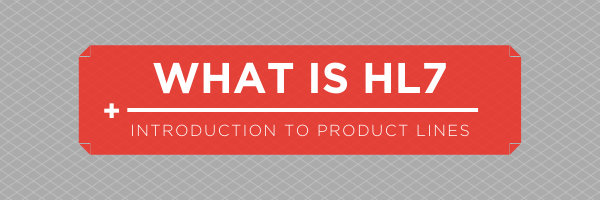
WHY STANDARDS?
Standards play a critical role in providing individuals and organizations with the tools to facilitate meaningful exchange of information. Subscribing to standards not only promotes organizational continuous improvement, but also enables comparable measurement against industry best practices.
INTRODUCTION TO HL7
Health Level Seven International (HL7®), created in 1987, is an international Standards Development Organization (SDO) that has improved workflow and data exchange throughout the healthcare industry by developing and maintaining technical standards and corresponding implementation guides.
HL7’s Governance and Operations Manual (GOM) describes how HL7 and its work products are governed and developed through methodical and formally controlled processes. The stringent processes ensure that HL7 standards meet American National Standards Institute (ANSI) criteria, further establishing their maturity level and appropriateness for use in production system. Many HL7 standards have been referenced in US Regulations.
HL7 STANDARDS
The HL7 standards product families of interest for the Quality Measurement community include:
- Clinical Document Architecture (CDA) - Document standard specifying structure and semantics of “clinical documents”, enables document exchange. CDAs can contain pertinent information required for Quality Measurement
- Consolidated Clinical Document Architecture (C-CDA) - Implementation Guide containing CDA templates used to specify and constrain the higher level CDA specification
- HL7 Version 2 - Messaging standard that has been widely adopted for electronic data exchange in the clinical domain
- HL7 Version 3 - Messaging standard for electronic data exchange in the clinical domain based on a model driven methodology that produces messages and electronic documents
- Fast Healthcare Interoperability Resources (FHIR®) - Normative interoperability standard facilitating data exchange in the healthcare ecosystem
Complementary to the primary standards listed above are quality measurement specific HL7 standards such as:
- Health Quality Measures Format (HQMF) - HL7 V3 standard for representing a health quality measure as an electronic
document - QI Core Implementation Guide - HL7 FHIR Profiles (Quality, Release 1 - US Realm) with extensions and bindings
needed to create interoperable, quality-focused applications - Quality Reporting Document Architecture - Category I (QRDA I) - US Realm - HL7 CDA constrained document format that provides a standard structure with which to report quality measure data to organizations that will analyze and interpret the data
- Quality Reporting Document Architecture - Category III (QRDA III) - US Realm - HL7 CDA constrained document
format that provides a standard structure with which to report aggregate clinical quality measure results - Clinical Quality Language (CQL) - Cross product family specification for expressions of clinical knowledge
Links have been included above to help you learn more about each of the HL7 product families and/or the quality measurement specific standards. In subsequent communications, we dive deeper into how these standards are being utilized by measure authors and adopted in national programs such as the Centers for Medicare and Medicaid Services (CMS) Quality Payment Program electronic Clinical Quality Measures (eCQMs).
For more training opportunities, check out our HL7 Education on Demand resources as well as in-person and virtual education.


